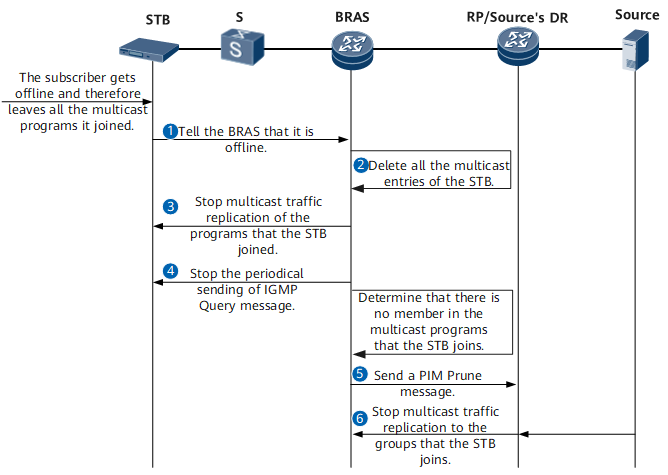Multicast Program Leave by Going Offline
After a user goes offline, the IPoE or PPPoE connection is terminated automatically for the user. Figure 1 illustrates the process of the multicast program leave by going offline. The key actions during this process are described in Table 1.

Session-based multicast replication is used in the following illustration of multicast program leave of all multicast groups by going offline. Multicast program leave of all multicast groups by going offline processes of other multicast replication modes are similar to that of session-based multicast replication.
Step |
Device |
Key Action |
|---|---|---|
|
STB |
When a PPPoE or IPoE STB user goes offline, the user leaves all the multicast programs it joined without sending IGMP Leave messages. |
|
BRAS |
The BRAS searches for the multicast programs that the STB user joined and removes all multicast entries of the STB user. |
|
BRAS |
The BRAS stops the multicast traffic replication to the STB user. |
|
BRAS |
The BRAS stops periodically sending the IGMP Query message to the offline STB user. |
|
BRAS |
If the offline STB user was the only member of the multicast program it joined on the BRAS, the BRAS sends a PIM Graft message to the rendezvous point (RP) or the source's designated router (DR). Upon receipt of the message, the multicast source determines that the multicast data of this program is no longer required. |
|
RP/source's DR |
The RP or source's DR stops the replication of multicast traffic to the BRAS, and the STB user leaves all the multicast programs it joined. |






